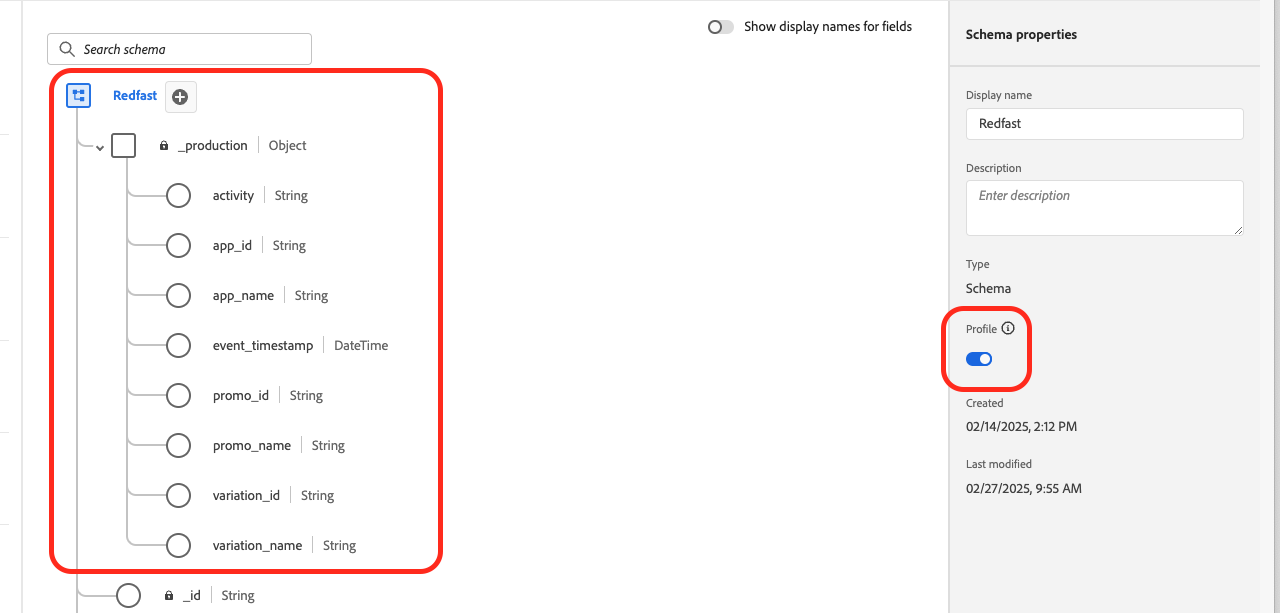Adobe
How to integrate Recurly Engage with Adobe Experience Platform, Journey Optimizer, and Analytics for event streaming and in-app triggers.
Overview
The Adobe connector suite lets you forward Recurly Engage prompt interactions to Adobe Experience Platform (AEP), trigger in-app prompts via Adobe Journey Optimizer (AJO), and send web events to Adobe Analytics using the Experience Platform Web SDK.
Required plan
This feature is an add on and can be purchased for any Recurly Engage subscription plan.
Prerequisites & limitations
- Company or App Administrator permissions.
- Active Adobe Experience Platform, Journey Optimizer, or Analytics licenses.
- Schema and data stream configurations in AEP prior to ingestion.
Definition
Adobe integrations enable bidirectional data flows: prompt events (impressions, clicks, custom goals) stream into AEP; AJO can call Recurly Engage APIs to trigger in-app prompts; and web events can be vaulted into Adobe Analytics.
Key benefits
- Unified data layer: Stream prompt interaction events into Adobe’s Data Lake in real time.
- Cross-product orchestration: Use AJO journeys to trigger in-app messaging via Recurly Engage.
- Web analytics: Capture prompt metrics alongside site analytics using the Experience Platform Web SDK.
Key details
Adobe experience platform (AEP)
The Recurly Engage AEP connector pushes prompt interaction events—impression, goal, decline, dismiss, timeout, custom_goal, and holdout—to an Adobe Data Stream.
Configure these objects in AEP:
-
Identity Map: Create or reuse an Identity Map.
-
Schema: Enable Profile toggle and add traits in a Field Group:
activity(String) — event type, e.g. "impression"app_id(String) — Recurly Engage instance IDapp_name(String) — instance nameevent_timestamp(DateTime) — when the event occurredpromo_id,promo_name— prompt identifiersvariation_id,variation_name— experiment variation identifiers (if applicable)
-
Data Stream: Attach the schema to your data stream.
-
Dataset: Create a Dataset from the same schema and enable the Profile toggle.
In Recurly Engage: Navigate to Settings → Integrations → External → Adobe and enter:
- Identity Map Symbol
- Event Type (use known xdm:eventType)
- Adobe Instance Name (e.g.,
_production, visible in schema details) - Data Stream ID

Adobe journey optimizer (AJO)
Use AJO Custom HTTP Actions to call Recurly Engage endpoints from within customer journeys, updating user traits or triggering in-app prompts.
-
In AJO, navigate to Actions → Create Action, choose Custom HTTP Action.
-
Enter Name and Description.
-
Under Endpoint Configuration:
- Set HTTP Method to GET.
- Enter your Recurly Engage API endpoint.
- Configure Query Params using
properties[<keyName>]=<value>. - Add the
USER-IDHTTP header.
-
Test the action with your Customer Success Manager.
-
Save and Deploy the action in your journey.
Once live, AJO will send requests to Recurly Engage, syncing properties and enabling prompt triggering based on journey logic.
Adobe analytics
Leverage the Experience Platform Web SDK (alloy.js) to forward prompt interaction events to Adobe Analytics on your web properties.
Contact your Customer Success Manager to enable Web SDK configuration and ensure events map to your Analytics data streams.
Updated 29 days ago
